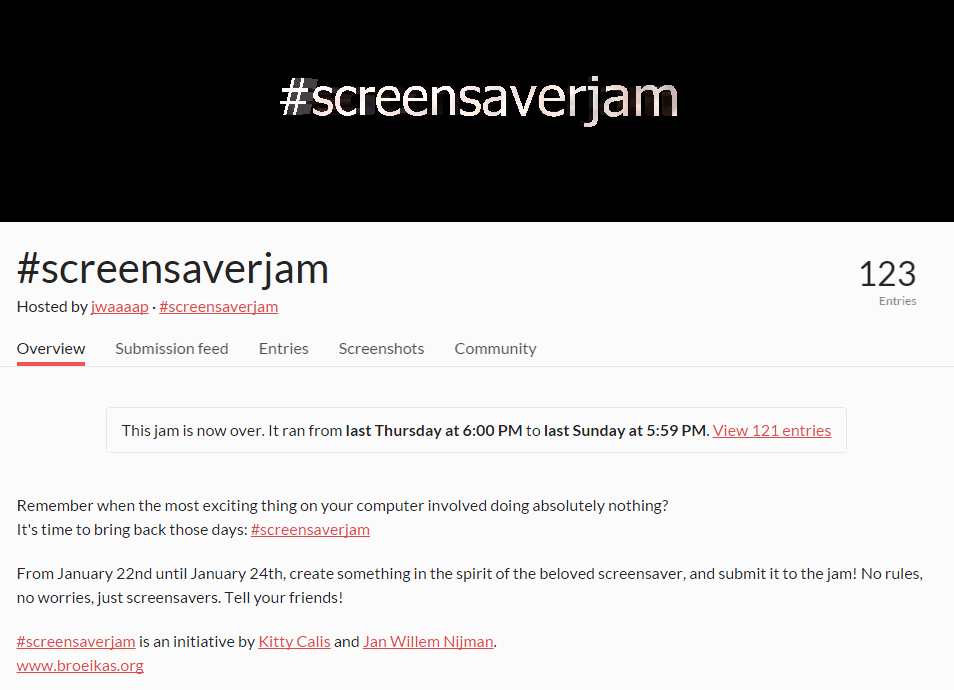
#ScreensaverJam
Screensaver Jam wrapped up last weekend.
While not all screensavers use procedural generation, screensavers are a great way to showcase a generative project, giving it a context.
Finding a way to contextualize your procedural generation project definitely helps people understand it more easily. I’d compare it to the way that people have an easier time understanding artwork in a gallery because it gives them a framework to start to interpret it. (Which is why some artists deliberately try to work outside a gallery space, because they’re critiquing that relationship.)
The hundred-and-twenty-plus entries in the jam show a wide variety of approaches. Perhaps it’s time for the screensaver to be revived as an artform. The demoscene evolved out of the bragging of the early hacking and software piracy scenes. Perhaps the screensaver, vestigial in a post-phosphorus age, can find a similar niche.
Or maybe it’s already happened while I wasn’t looking. Is there a happy little community of After Dark enthusiasts I’ve never heard about, who compete to dazzle each other with new techniques? It wouldn’t surprise me. Out of all software, screensavers are perhaps the most afraid of human interaction. They’re timid mice that flee when they sense your approach. Perhaps their creators share similar traits.
